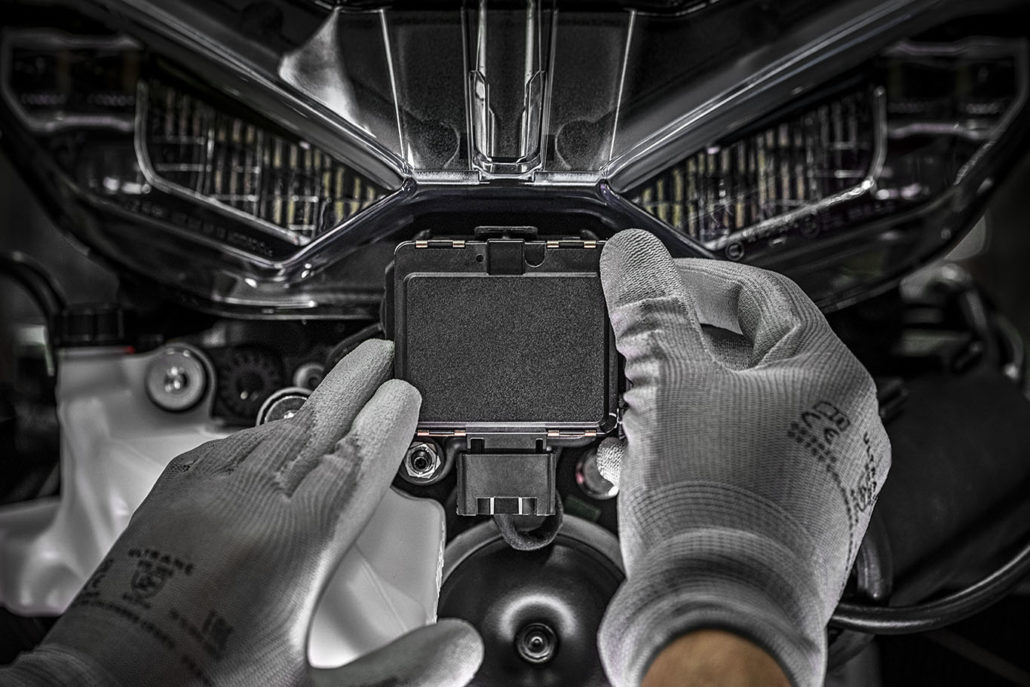Ducati has announced it will begin production of the world’s first motorcycle equipped with front and rear radar technology: the new Multistrada V4.

As the name suggests, the new Multistrada will receive a V4 powerplant, with a ‘completely new’ engine developed for maximum smoothness of operation and a substantial extension of maintenance intervals.
For the fourth generation of the Multistrada, Ducati has developed this new powerplant to meet the needs required for “adventouring” use without neglecting emotion and sportiness. The complete redesign made it possible to reach record-breaking maintenance intervals for the world of two wheels. All the details of this new engine will be revealed on 15 October.
But it’s the new rider aid which is gaining attention, with the new radar system promising to be ‘a true revolution for the world of two wheels.’ Designed to improve comfort and riding assistance, especially on long motorway journeys, the radar is small (70 x 60 x 28 mm) and only adds 190grams to the overall weight.
Ducati’s interest in this type of systems dates back to 2016, when the Company worked in collaboration with the Department of Electronics, Information and Bioengineering of the Politecnico di Milano to experiment with this type of systems. This first experience has confirmed the applicability of this kind of technology to vehicles on two wheels, and has pushed Ducati to the creation of a complete package of riding assistance using two radars that, within four years, has been developed and produced in close cooperation with Bosch, a top-level technology partner, and sees its first application on the new Multistrada V4.
The radar positioned in the front of the vehicle controls the operation of the ACC (Adaptive Cruise Control), which by means of controlled braking and acceleration automatically adjusts the distance (selectable on four levels) from other vehicles when riding at a speed between 30 and 160 km/h. This car-derived system has been evolved and developed according to the dynamics and ergonomics of a two-wheeled vehicle. In particular, the authority of the system in terms of deceleration and acceleration has been limited in order to ensure the rider can maintain constant control of the vehicle in any situation. The system allows for more comfortable riding, especially on long motorway journeys.
The rear radar, on the other hand, is able to detect and report vehicles positioned in the so-called blind spot, i.e. the area not visible either directly by the rider or through the rear-view mirror. The BSD (Blind Spot Detection) system also signals the approaching from behind of vehicles at high speed.